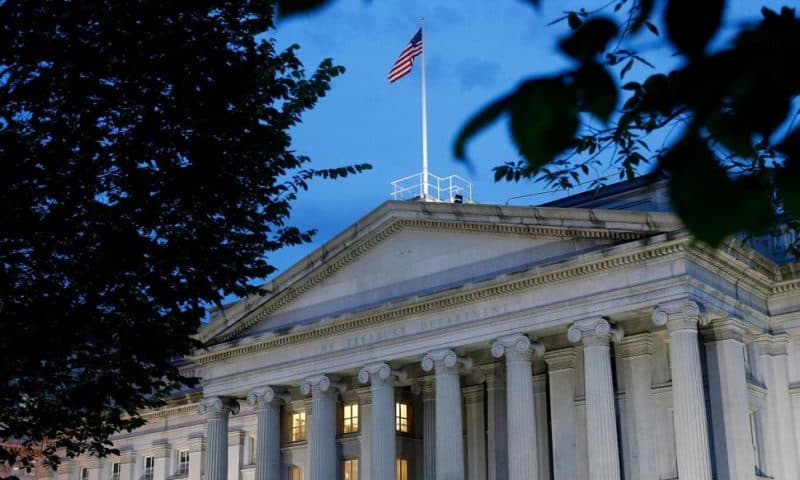The Treasury Department is projecting government borrowing of $947 billion in the current July-September period, which would be a record for the quarter but down from the all-time high of $2.75 trillion in this year’s second quarter.
WASHINGTON — The Treasury Department is projecting government borrowing of $947 billion in the current July-September period, which would be a record for the quarter but down from the all-time high of $2.75 trillion in this year’s second quarter.
Treasury officials also announced Monday that the government plans to borrow $1.22 trillion in the October-December period.
Those amounts include $1 trillion in expected borrowing to finance another economic stimulus package, which is tied up in negotiations between Democrats and Republicans.
Treasury officials said the $1 trillion amount, spread over this quarter and the October-December period is essentially a place holder since both sides remain far apart on the issue of how much support is needed for the economy, on top of the more than $3 trillion Congress has already provided.
The House in May approved a $3.5 trillion measure which the Republican-controlled Senate has refused to take up. Instead, GOP senators have indicated they favor a smaller $1 trillion package.
The $947 billion in projected borrowing for the current quarter surpasses the old mark for the period of $530 billion set in 2008 when the government was having to spend large sums to deal with the 2008 financial crisis.
The Congressional Budget Office is projecting that the deficit for this year will soar to $3.7 trillion, far surpassing the previous record deficit of $1.4 trillion in 2009, the first time the shortfall for a single year topped $1 trillion.
The government’s new borrowing for this budget year, which ends Sept. 30, is expected to total $4.51 trillion under Treasury’s current projections. Much of that borrowing is for rolling over existing debt. Treasury expects to begin the 2021 budget year with record first-quarter borrowing of $1.22 trillion.
The borrowing estimates released Monday will be followed Wednesday by an announcement of the types and sizes of Treasury securities the government expects to sell this quarter to cover its borrowing needs.
On Friday, ratings agency Fitch cut the outlook for its U.S. credit rating to “negative,” from “stable,” although it kept its highest rating of AAA for the government’s soaring public debt, which now stands at $26.7 trillion.
“There is a growing risk that U.S. policymakers will not consolidate pubic finances sufficiently to stabilize public debt after the pandemic shock has passed,” Fitch said in giving its reason for lowering its U.S. outlook.

